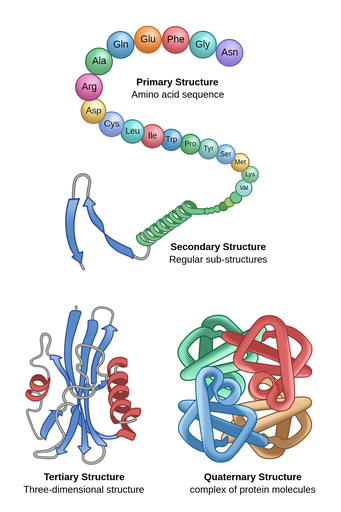Proteinshave at least three structures: primary, secondary, and tertiary structure.
The primary structure of a protein is its polypeptide sequence. The secondary structure consists of the coil (alpha-helix) and folds (beta-sheet) that result from hydrogen bonds between repeating constituents of the polypeptide chains. The tertiary structure is the overall shape of the polypeptide resulting from all theinteractionsbetween the side chains of various氨基酸。一个quaternary structure also arises when a protein consists of two or more polypeptide chains (Figure 1).

Figure 1The various structures formed by amino acids and proteins are given specific terms. The primary structure refers to the linear amino acid sequence. The secondary structure refers to the formation of regular substructures such as alpha helices or beta sheets. The tertiary structure describes the 3D structure of the protein, accounting for the way the substructures interact with each other. Finally, if a protein is comprised of multiple polypeptides, their interaction is described in the quaternary structure.